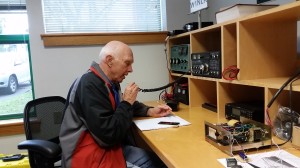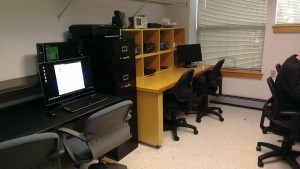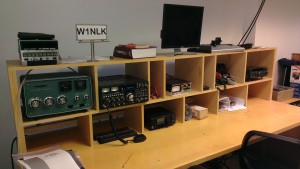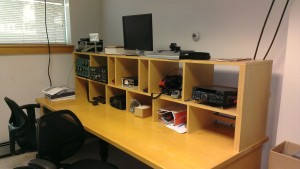Effective Tuesday, November 18th 2014, the Norwalk 440 repeater will be converted to a new digital mode called “DMR”. Digital Mobile Radio, which is based on international standards, allows repeaters to carry multiple “talk groups” and be linked regionally, nationally, and of course worldwide.
For this experiment (which is what ham radio is all about!), the analog repeater you are familiar with at 448.075 will be digital for a test period of several months. If you have programmed your radios to scan this frequency, it will stop and just hear digital white noise.
The normal New Canaan 440 repeater will be back to analog on Wednesday, and we are actively looking at moving echolink/irlp over to that machine as it will not be available on Norwalk during the digital test.
Thank you for your patience during this test of an exciting new mode of operation!
If you would like more information about DMR, please reach out to W1FSM, WB2JVB, N1LLL or N1PLH.
This link has good information on DMR: http://www.dmr-marc.net/
Here are some other FAQs about DMR: http://www.k1tmm.info/dmr-faq#faqnoanchor
Several GNARC members have bought a ConnectSystems CS700 radio to experiment with DMR. It costs about $180. Look for the “CS700” at the web site below:
http://www.connectsystems.com/
As discussed at the November meeting last night, an online sign up sheet has been created so any member can come help with THEIR club communications center. Please see the link to the right.
Please check often to see when the center will be open for work to be done, and of course hang and chat with your ham pals at the same time!
Emails will be sent on the reflector when the signup sheet has new items on it.
You do not HAVE to create an account on signup genius. You can just select the item, click the large sign up button on the bottom and fill in your info. If you want to create an account you can, but it is not needed.
Thank you in advance for your help!
Led by Curt, W1FSM, and Dee, N1ZD, some major progress was made in the radio room today! The right side is primarily HF and the left side is VHF/UHF. The desks have been positioned, and placement of various items like the antenna patch panel have been decided. We await a 240v outlet to power the amp. There are power supplies installed at each table for the radios.
Power will be distributed via a Rigrunner powerpole panel at the center of each table. Some rigs have build in power supplies. There is a 8 foot long power strip bolted to each table that allows easy access to 120V as needed.
Next steps will involve setting out radios and hooking them up. Building coax jumpers and the antenna patch panel. Deciding if more monitors/computers will be needed for DX spotting, etc other than the main computer shown in the pictures.
If you want to help, please contact Curt, he is coordinating the room build out and more help is needed! We want you to make this room your room!
ARES
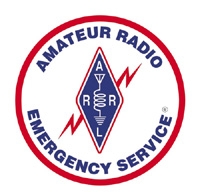 The Amateur Radio Emergency Service ® (ARES ® ) consists of licensed amateurs who have voluntarily registered their qualifications and equipment for communications duty in the public service and when disaster strikes. Every licensed amateur, regardless of membership in ARRL or any other local or national organization is eligible to apply for membership in ARES. Training may be required or desired to participate fully in ARES. You can read the official ARRL material on ARES here.
The Amateur Radio Emergency Service ® (ARES ® ) consists of licensed amateurs who have voluntarily registered their qualifications and equipment for communications duty in the public service and when disaster strikes. Every licensed amateur, regardless of membership in ARRL or any other local or national organization is eligible to apply for membership in ARES. Training may be required or desired to participate fully in ARES. You can read the official ARRL material on ARES here.
ARES is organized regionally. The regions match the regions used by the Connecticut Department of Emergency Services and Public Protection. In Southwest CT, we are in region 1. There are five “district emergency coordinators”, or DECs that report into the SEC. You can learn much more about ARES in Connecticut here: www.ctares.org.
ARES members can participate in public service events to provide communications support that enhances the safety of the operation. Events like charity bike rides and runs are classic examples where amateur radio provides the organizers with communications that cover a wide area. These events help ARES members practice their skills in deploying their equipment and operating on a “controlled net” to practice effective communications skills.
At this time, we are looking to create relationships with local agencies and organizations to provide assistance during large events and during emergencies. It is important to realize that ARES members don’t “self deploy” during disasters, but are part of an overall emergency preparedness team.
Local Nets
There is a periodic region 1 CERT/ARES net. When called, this net occurs on Tuesday at 8:00 PM. All amateurs are welcome, and encouraged to check into the net. Frequencies for the CERT/ARES net are 146.475 (+ 1 MHz Split) with a PL of 100.0 Hz. At this time GNARC officers are looking into a way to link one of our repeaters into the statewide net that occurs on Sundays.
You can also learn more about CERT, which is a fast growing emergency preparedness organization across the country, see http://www.fema.gov/community-emergency-response-teams. You can also contact local CERT leaders in Wilton, Stamford, Fairfield, Westport and other Region 1 towns. More towns are turning to CERT to help in emergencies, and the addition of amateur radio to the CERT is important to operations.
For more information, please contact Paul Lourd, WB2JVB, DEC Connecticut Region 1.
Charles, N1LLL and Erika, KC1BLS installed the beam this past Sunday! Sam, NV1P, arrived later on as well and lent a hand ! Wow. A few photos are attached.
GNARC member Steve Dick, K1RF, will present “Software Defined Radio (SDR) for Amateur Radio – An Overview”. This talk will cover what is SDR, how it works, basic types, some examples of current equipment from low end to high end, how SDR has evolved, and how to access SDR radios on the internet for free! Some short videos of SDR SSB and CW operation will be included. The talk will be followed by a demonstration of an actual SDR receiver. Steve is an amateur extra and an electrical engineer who has built and used several SDRs and has closely followed the amateur radio SDR market.
All are welcome!
This presentation will be at the Westport Astronomical Society / Rolnick Observatory on December 4th, 2014 at 7:30pm.
182 Bayberry Lane
Westport, CT

